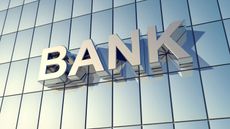Kiplinger Inflation Outlook: Strong March Report Will Put the Fed on Pause
Any interest rate cut will likely be delayed until the end of July or later, to make sure inflation is weakening.

Kiplinger’s Economic Outlooks are written by the staff of our weekly Kiplinger Letter and are unavailable elsewhere. Click here for a free issue of The Kiplinger Letter or to subscribe for the latest trends and forecasts from our highly experienced Kiplinger Letter team.
For the third consecutive month, no progress was made against inflation. Prices rose 0.4% in March, the federal government reported, pushing the 12-month inflation rate up to 3.5%. Excluding food and energy, prices also rose a monthly 0.4%, keeping the annual rate of so-called core inflation at 3.8% for the second month. Services prices excluding housing rose a strong 0.6%, with car insurance and repair prices both up about 3% on the month. This is a key inflation measure the Federal Reserve tracks in order to see whether price momentum is continuing or not.
On the plus side, prices of groceries were unchanged on a monthly basis for the second month in a row and were up only 1.2% from a year ago. Although energy prices rose for the second straight month, the prices of all other goods returned in March to their normal pattern of small monthly declines, after an upward blip in February. Prices of both new and used cars and trucks declined a bit in March as inventories improved.

Sign up for Kiplinger’s Free E-Newsletters
Profit and prosper with the best of expert advice on investing, taxes, retirement, personal finance and more - straight to your e-mail.
Profit and prosper with the best of expert advice - straight to your e-mail.
The lack of progress will mean the Federal Reserve will not be cutting interest rates until its July 31 meeting at the earliest. If inflation reports don’t improve, the Fed could push off any rate cuts until its November 7 meeting, after the election. The Fed is probably hoping that it will be able to cut in July, because then it could follow a pattern of cutting at every other meeting and avoid having to cut at its Sept. 18 meeting, during the height of the presidential campaign.
There is still a decent chance of a rate cut this summer. We expect that smaller increases in rents will result in a lower inflation rate for shelter. This hasn’t shown up in the broad inflation reports yet, but should in the near future. But the Fed will need to see easing inflation in the next several reports in order to justify an interest rate cut. While we expect that the April report will show another increase in gasoline prices, the Fed has typically discounted energy price changes. So, the key focus will be on housing and other services.
Related content

David is both staff economist and reporter for The Kiplinger Letter, overseeing Kiplinger forecasts for the U.S. and world economies. Previously, he was senior principal economist in the Center for Forecasting and Modeling at IHS/GlobalInsight, and an economist in the Chief Economist's Office of the U.S. Department of Commerce. David has co-written weekly reports on economic conditions since 1992, and has forecasted GDP and its components since 1995, beating the Blue Chip Indicators forecasts two-thirds of the time. David is a Certified Business Economist as recognized by the National Association for Business Economics. He has two master's degrees and is ABD in economics from the University of North Carolina at Chapel Hill.
-
 Stock Market Today: S&P 500, Nasdaq Extend Losing Streaks
Stock Market Today: S&P 500, Nasdaq Extend Losing StreaksThe two indexes have closed lower for five straight sessions.
By Karee Venema Published
-
 Save Over $40 on Audible With Amazon's Latest Deal
Save Over $40 on Audible With Amazon's Latest DealAmazon’s latest promotion lets you score three months of Audible for just $0.99 a month.
By Erin Bendig Published
-
 The Robots Are Coming... But Not For a While
The Robots Are Coming... But Not For a WhileThe Kiplinger Letter There’s excitement in the tech sector over the potential of humanoid robots, but widespread adoption is likely to be years away.
By John Miley Published
-
 Farmers Face Another Tough Year As Costs Continue to Climb: The Kiplinger Letter
Farmers Face Another Tough Year As Costs Continue to Climb: The Kiplinger LetterThe Kiplinger Letter Farm income is expected to decline for a second year, while costs continue to up-end farm profitability.
By Matthew Housiaux Published
-
 H-1B Work Visa Rules Get a Revamp
H-1B Work Visa Rules Get a RevampThe Kiplinger Letter H-1B visas allow employers to hire high-skilled foreign workers. Regulators have finalized new rules for this visa program following last fall's proposal.
By Matthew Housiaux Published
-
 Woes Continue for Banking Sector: The Kiplinger Letter
Woes Continue for Banking Sector: The Kiplinger LetterThe Kiplinger Letter Regional bank stocks were hammered recently after news of New York Community Bank’s big fourth-quarter loss.
By Rodrigo Sermeño Published
-
 Are College Athletes Employees of Their Schools?: The Kiplinger Letter
Are College Athletes Employees of Their Schools?: The Kiplinger LetterThe Kiplinger Letter A recent ruling has ramifications for labor relations and the unionization of student athletes.
By Sean Lengell Published
-
 Salton Sea Clean Energy and Lithium Project Gets Approval: The Kiplinger Letter
Salton Sea Clean Energy and Lithium Project Gets Approval: The Kiplinger LetterThe Kiplinger Letter California's Salton Sea is due to see the construction of a new lithium extraction and geothermal clean energy power plant.
By Matthew Housiaux Published
-
 More Woes for Anheuser-Busch as a Strike Looms: The Kiplinger Letter
More Woes for Anheuser-Busch as a Strike Looms: The Kiplinger LetterThe Kiplinger Letter Drinkers of Anheuser-Busch beers may want to stock up soon. A looming strike threatens to shutter its U.S. breweries later this month.
By Sean Lengell Published
-
 The Auto Industry Outlook for 2024
The Auto Industry Outlook for 2024The Kiplinger Letter Here's what to expect in the auto industry this year. If you’re in the market for a car it won’t be quite as daunting as it was during the pandemic and after.
By David Payne Published